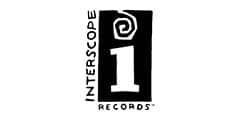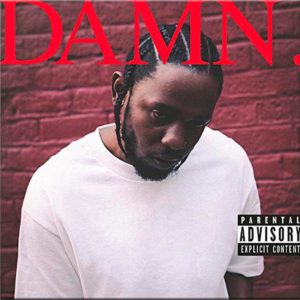Marketplace
2017 Interscope Records PRESSING
- Catalog Number B0026745-01
- Release Year 2017
- Vinyl Mastering Engineer Mike Bozzi
- Pressing Weight 180g
- # of Disks 2
- Jacket Style Gatefold
When listening to this album I think of this band or music:
On 2015’s To Pimp a Butterfly, Kendrick Lamar was compared to artists as diverse as jazz great Miles Davis and funk legend Sly Stone. The masterful album filters many variants of black music in America through Lamar’s thoughtful approach to hip-hop. On DAMN., Lamar pares things back, echoing at times the sparseness of a mentor such as Dr. Dre, all the while going darker and bleaker.
I would listen to this album while:
Lamar’s wordy rhymes require close listening as well as handy access to a search engine. DAMN. is rife with religious metaphors, and those not up on their Bible history may miss out on some intricacies. No matter. Take a long morning to go to Sunday school with Lamar’s music. This is the rare album in any genre that warrants serious study time.
Music from this album would be a great soundtrack to:
If Lin-Manuel Miranda wants to follow “Hamilton” with another hip-hop musical, he can do far worse than looking to DAMN. for inspiration. These songs aren’t necessarily snappy and catchy, but Lamar knows how to spin a tale. The album already feels akin to a hip-hop opera. A number of key themes for great theater are present: good versus evil, redemption versus salvation, and, in Lamar’s words, weakness versus wickedness.
When Lamar toured in support of DAMN., he did so with a staged outfitted with nothing. Flanked by a giant screen, the bare platform often encouraged audience members to look down—or squint, depending on how far back in the arena guests were seated. The design served two key purposes: It forced fans to grapple with Lamar as a human being rather a superstar and underscored the songs of DAMN. needn’t any stage show trickery to heighten the drama.
Lamar simply accomplished in concert what he does on DAMN.: Bring listeners into his mind. He achieves the feat not just with bracing wordplay, but by constantly varying his vocal tones, creating the sensation of an artist playing multiple roles. Take “PRIDE.,” where Lamar goes high, low, soft, and loud in an attempt to grapple with the various impulses weighing on him. In a perfect world, Lamar admits over a low-key piano-based beat and jazzy rhythmic inflections, he’d “choose faith over riches” and “make schools out of prisons.” He then reminds us that no such ideal place exists.
Such dynamics constantly play out through the course of the 14 tracks, where Lamar often wonders not just what it means to be a rapper—and someone who escaped the fate of many in his poor, gang-riddled community—but what it means to be a decent human and solid family man. In “XXX,” he deals with the aforementioned topics before zooming out to contest that inner-city violence can’t be disconnected from American polices at large. “The great American flag is wrapped in drag with explosives,” Lamar raps near the song’s end, when the tune has already shifted direction multiple times, having begun as an 80s-influenced hip-hop track before ending up in bebop territory.
Afforded serious low-end weight and bass-line depth in analog, DAMN. doesn’t pretend to have all the answers, but it offers one solution. On the light-bouncing “DUCKWORTH.,” Lamar notes how his father narrowly escaped death at the hands of the man who would ultimately give Lamar a record deal. Chance? No. Lamar chalks it up to the fact both men ultimately valued kindness. The album proceeds to end with the same spoken-word phrase with which it began, implying that someday, maybe we’ll get it right.
DAMN.


 3.5
3.5